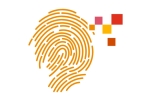2022 Global Risk Survey
Embracing risk in the face of disruption
Seize the opportunity through strategic risk management capabilities
The world is different than it was two years ago and so is the risk environment in which organisations operate. Change is fast and disruptive. The pandemic caused disturbance in the labour market and the supply chain. The current volatile geopolitical environment is further exacerbating supply constraints, heightening cyber risks, introducing rapidly evolving sanctions and putting safety and humanity at the forefront of all decisions.
Ransomware attacks are more frequent and more sophisticated, no doubt a driver of cyber’s rise to the top threat to business among CEOs in our 25th Global CEO Survey. The changing work environment brought on by the pandemic continues to disrupt talent and labour markets.
Supply shortages, sanctions and rising raw material costs are heightening risks within supply chains as organisations deal with upstream supply chain risks related to subcontractors and other fourth parties that further complicate risks. Customers, investors and other stakeholders are laser-focused on ESG, particularly in light of recent proposed SEC climate disclosures. Each of these risks can cause significant impacts, but because they are also highly interconnected, any one risk can initiate far-reaching implications across the enterprise and put brand and reputation at stake.
In this turbulent business environment, many executives find the need to revise and adapt their strategies and operating models at a rapid pace. They know that capturing opportunity and avoiding disruption requires speed. While managing disruptions, organisations are simultaneously dealing with internal digital transformation challenges, and how to bring along internal stakeholders as they automate business processes and drive digital into everything they do.
Organisations’ risk management and broader resilience capabilities need to quickly adapt to support business agility and to contribute proactive, robust and timely risk insights for decision-making. In an environment where change is constant, strong risk and resilience capabilities can provide an edge. Business leaders can make confident decisions in pursuit of their strategy that are informed by a panoramic view of risk.
Our 2022 Global Risk Survey highlights five key actions that organisations should consider to drive their risk management capabilities forward.
Core Results
It is proving difficult to keep pace with rapid technological developments. 79% of respondents describe it as a major challenge to keep up with the pace — especially in case of digital change. More than two-thirds of participating executives are in the process of increasing budgets for risk management technology – predominantly in the areas of data analytics, process automation, and risk monitoring and detection.
Another issue is a lack of consistency: 75% of participants say their risk management is not consistent across the organization. The different processes and systems further slow down the response. This poses a significant risk of itself.
About the survey
The 2022 Global Risk Survey is a survey of 3,584 business and risk, audit and compliance executives conducted from February 4 to March 31, 2022. Business executives make up 49% of the sample, and the rest is split among executives in Audit (16%), Risk management (24%), and Compliance (11%).
Fifty-eight percent of respondents are executives in large companies ($1 billion and above in revenues); 19% are in companies with $10 billion or more in revenues.
Respondents operate in a range of industries: Financial services (23%), Industrial manufacturing (22%), Retail and consumer markets (16%), Energy, utilities, and resources (15%), Tech, media, telecom (13%), Health (9%), and Government and public services (2%).
Respondents are based in various regions: Western Europe (30%), North America (29%), Asia Pacific (21%), Latin America (12%), Central and Eastern Europe (3%), Middle East (3%), and Africa (3%).
PwC Research, PwC’s global Centre of Excellence for market research and insight, conducted this survey.








